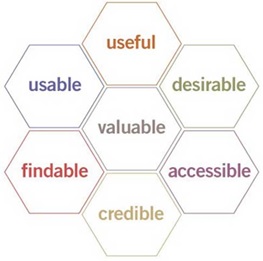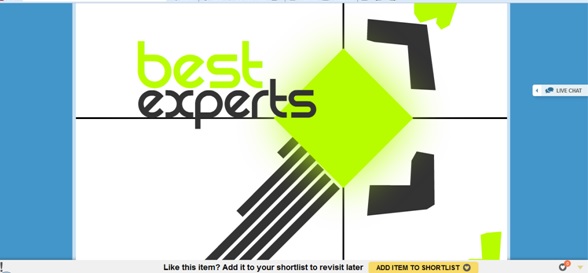When the web was first born, there wasn’t much to worry about on the usability front, thanks to the format of messaging boards and not much else. It grew, so it became more usable. Then search engines were born meaning that once people realised there were ways and means in which to trick them, the web became less usable.
At one point the combination of black hat SEO techniques, coupled with spammers and so on, made the internet incredibly frustrating.
Things have changed, thankfully, and the web is once more a useful place where you can find information on any subject you’d care to think up. A lot of this can be attributed to the search engine’s fight against spamming and black hat marketing techniques.
Think about sites you like
Now more than ever, it’s necessary to tailor content to suit the user and not the search engine. Whilst content has always been important, it’s now vital to the success of any website and to how a site ranks with the search engines.
It’s not just about the content though, every aspect of a site must be optimised for both the user and search engine, including:
- Site structure
- Navigation
- Page copy
- Content
- Social sharing
- Accessibility
So, it’s necessary to think about both from the very moment of inception, to the stage where a site is built, established and producing content.
Design and site structure
A site that is confusing in any way is likely to see a low conversion rate and this applies to design (including colours and suchlike), navigation and content.
Whilst it’s a good idea from a technical standpoint to ensure that a site is structured logically for the search engine spiders, this doesn’t mean that user navigation should be ignored.
A site that has no real structure, or that makes it difficult for visitors to find their way around, will be abandoned quickly. Likewise, any spelling or grammar mistakes on the home page (or anywhere else for that matter) are likely to have visitors running for the competition.
It must always be borne in mind that the main reason you have a business website is to gain customers and these are real people, not algorithmic robots. The key to this, as with most things in business, is planning.
A project that hasn’t been planned effectively is not always doomed to fail, but it can certainly cause a lot of headaches due to unforeseen events and problems. However, if a site is designed step-by-step, with the designer, content manager and SEO professional all having some input, then it’s success it all but guaranteed.
Breaking it down
Firstly, it should be considered and discussed how the site is going to be used and by whom, so target audience should already have been identified.
Think about:
- Will it be used on mobile and tablet devices, so needs to be responsive or adaptive, or will you have a separate mobile site built?
- Does there need to be a lot of information on any one page, can this be broken down into sections?
- Will you be using graphical elements that could slow the site down such as third-party scripts or Flash?
- Do you have a strong brand persona to make the site look desirable with a great logo, colour scheme and tone of voice?
- Will it need interactive elements and/or allow customers to create a login?
 The below ‘honeycomb’ chart is from the government advice website on usability and gives the most important aspects of it when thinking about design. The chart was dreamed up by Peter Morville, who has been involved with information architecture since 1994, working with the likes of Google and Gopher. Based on the 3 circle diagram (above) that looks at content, context and users, this expands the basic idea and gives a framework for designing with usability in mind.
The below ‘honeycomb’ chart is from the government advice website on usability and gives the most important aspects of it when thinking about design. The chart was dreamed up by Peter Morville, who has been involved with information architecture since 1994, working with the likes of Google and Gopher. Based on the 3 circle diagram (above) that looks at content, context and users, this expands the basic idea and gives a framework for designing with usability in mind.
Each of the hexagonal facets can be broken down as follows:
- Useful: Is the site really useful to its visitors? Why? What does it give them in terms of value? (products, services, information etc.)
- Usable: Is it easy to use?
- Desirable: Does the site look good, taking advantage of branding, with nice fonts and colours that match the brand persona?
- Findable: Again, can visitors find what they need, does it have a search function and a site map for visitors?
- Accessible: Is the site disability friendly?
- Credible: Is the site and its content credible, is the information to be trusted? Why?
- Valuable: Does the site give customer value in terms of satisfaction?
According to Morville, the honeycomb hits several “sweet spots” by serving several purposes at once. Not only can it advance the conversation when it comes to usability, but it also supports a modular approach to design.
This is because the inevitable trade-offs that will have to be made when it comes to drilling down the balance on content, context, users and credibility can be addressed explicitly, rather than subconsciously.
It also allows designers and project teams to scrutinise each aspect of the site individually, rather than as a whole, meaning that boundaries can be pushed and new possibilities explored.
What about SEO?
To some extent usability will dictate to some aspects of SEO, but technical SEO (such as structure and meta information, for example) will remain largely unaffected by this approach. However, in terms of site speed and content, it should be kept in mind that certain things will affect discoverability, such as Flash animations on a front page (gateway page).
Ignoring the fact that Flash is really on its way out, it’s wise to ask yourself what Flash, or any animation or gateway page, really gives in terms of usability. It looks pretty, if it’s been well done, but that’s about it. Flash and SEO don’t generally play well together as Flash essentially hides content from the search engines and distorts analytics data.
Screenshot uses Flash template example from Template Monsters
The above example really gives what can be considered a presentation on a business, which in this case is a template for a digital agency.
Usability covers an awful lot of issues, too much to go into at any one time. This is true of every aspect of site design, which should be considered a project involving a team, rather than the job of a solitary designer coming up with everything.
Right from the very beginning it’s necessary to look at who will use the site, why they will and how they will and how this can be made easier for them, from search to landing to navigation.
This involves elements of design, technical, content and ultimately device, as if a generic responsive site is going to be used, then the mobile and tablet user will also have to be considered.
What this means is that web design, digital marketing and SEO should be considered holistically, rather than as individual parts, with the result being a site that performs well on every level.



